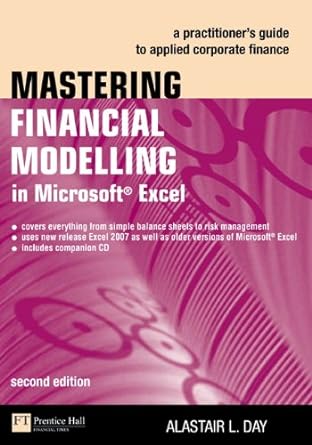Answered step by step
Verified Expert Solution
Question
1 Approved Answer
18-52 (LO. 7) Refer to Example 42 in text Section 18-5e. Albert owns 100% of A Corporation, Betty is the sole proprietor of B Company,
18-52 (LO. 7) Refer to Example 42 in text Section 18-5e. Albert owns 100% of A Corporation, Betty is the sole proprietor of B Company, and Cal is the sole proprietor of C Company. Each business generated $500,000 of taxable income and before-tax cash flow. A Corporation and B Company produce a product, but C Company provides accounting services. A Corporation will distribute $200,000 of its after-tax income to Albert. All three owners face a 37% marginal tax rate on ordinary income. B Company qualifies for the 199A deduction, but C Company does not because it provides accounting services and its taxable income exceeds the threshold for that deduction. Assume the tax rate applied to dividend income equals the top 20% net long-term capital gain rate plus the 3.8 % net investment income tax rate. The corporate tax rate is 21% and 199A deduction is 20%. What will be the values of A Corporation, B Company, and C Company after three years? Assume that each business (a) required a $5,000,000 initial investment, (b) earns an annual 10% before-tax rate of return on the beginning-of-the-year investment, (c) can reinvest its after-tax cash flow back into the business, and (d) there is no unrealized appreciation of their assets. A Corporation B Company C Company Initial investment $5,000,000 $5,000,000 Taxable income to owners in year 1 After-tax cash flow for year 1 395,000 X 400,000 $5,000,000 500,000 300,990 X 352,000 V 315,000 Investment at the end of year 1 5,300,990 5,352,000 V 5,315,000 Taxable income to owners in year 2 418,778 X 428,160 V 531,500 After-tax cash flow for year 2 319,109 X 376,781 334,845 Investment at the end of year 2 5,620,099 X 5,728,781 V 5,649,845 Taxable income to owners in year 3 443,988 X 458,302 564,985 Initial investment Taxable income to owners in year 1 After-tax cash flow for year 1 A Corporation $5,000,000 395,000 X B Company $5,000,000 400,000 C Company $5,000,000 500,000 300,990 X 352,000 315,000 Investment at the end of year 1 5,300,990 X 5,352,000 5,315,000 Taxable income to owners in year 2 418,778 X 428,160 V 531,500 After-tax cash flow for year 2 319,109 X 376,781 V 334,845 Investment at the end of year 2 5,620,099 X 5,728,781 V 5,649,845 Taxable income to owners in year 3 443,988 X 458,302 V 564,985 After-tax cash flow for year 3 338,313 X 403,306 V 355,841 X Investment at the end of year 3 5,958,418 X 6,132,087 6,005,786 X Feedback A Corporation B Company C Company Taxable income and before-tax cash flow $ 500,000 $500,000 $500,000 Corporate tax @ 21% (105,000) -0- -0- Cash available to owners $395,000 $500,000 $500,000 199A deduction@20% -0- (100,000) -0- Taxable income to owners $395,000 $400,000 $500,000 Shareholder tax on $200,000 dividend income @ 23.8% ($ 47,600) -0- -0- Individual tax on ordinary income @37% $ -0- ($148,000) ($185,000) Before-tax cash flow $500,000 $500,000 Corporate tax (105,000) -0- $500,000 -0- Shareholder tax on dividend income (47,600) -0- -0- Individual tax on ordinary income -0- After-tax cash flow $347,400 (148,000) $352,000 Effective tax rate 30.5% 29.6% (185,000) $315,000 37.0%
Step by Step Solution
There are 3 Steps involved in it
Step: 1

Get Instant Access to Expert-Tailored Solutions
See step-by-step solutions with expert insights and AI powered tools for academic success
Step: 2

Step: 3

Ace Your Homework with AI
Get the answers you need in no time with our AI-driven, step-by-step assistance
Get Started


